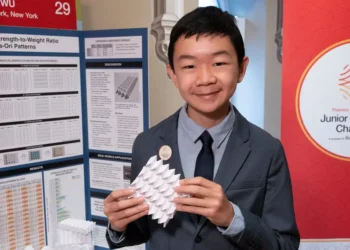The Tokushima Modern Art Museum in Japan was duped in a major art fraud more than 25 years ago, and it just closed the case last week, when it published an investigation into an early Cubist painting that turned out to be a fake by a famous forger.
The museum had one of four forgeries recently discovered in Japan, all now said to be by Wolfgang Beltracchi, who was convicted in Germany in 2011 for faking masterworks and who now says he painted in the styles of more than 100 artists.
The belated discoveries have rocked the fine art scene in Japan and sparked a debate about value, authority and authenticity. The forgeries also demonstrate the geographic expanse and long tail of art crime, and hint at the strong possibility of more awkward finds to come.
“It may be possible that my work continues to confuse the protagonists of the art market,” Mr. Beltracchi said in one of a series of emails this week, adding that most of the 300 paintings he says he created under others’ names over 40 years “have not been revealed so far.”
Extraordinary Skills
In the late 1990s, the museum in Tokushima, on the island of Shikoku, bought what it thought was a painting by the French artist Jean Metzinger, part of an acclaimed series on cycling from the 1910s. But it was actually an “original fake,” Mr. Beltracchi’s specialty.
Mr. Beltracchi, 74, did not reproduce known paintings like typical forgers. He painted new works in old styles, claiming they were lost or previously unknown works from deceased famous artists. He copied the styles of Heinrich Campendonk, Fernand Léger and Max Ernst, and his victims included the actor Steve Martin, who had purchased what he thought was a Campendonk from Christie’s.
The forger’s wife, Helene, 67, introduced the paintings as pieces in her family’s collection, even posing in photos as her own grandmother among her husband’s creations to augment their credibility.
The couple and two other accomplices were prosecuted and convicted in Germany in 2011. Mr. Beltracchi, who admitted to creating 14 forgeries that sold for about $45 million, was sentenced to prison and released in 2015.
But dozens of additional fakes were uncovered in the German investigation, including “At the Cycle Race Track, 55,” the work claiming to be part of the Metzinger cycling series, at the Tokushima museum. Mr. Beltracchi discussed the work in a 2014 book, “Self Portrait,” and that particular image had circulated widely, including in a “60 Minutes” episode about the forger in 2014. Yet word apparently didn’t reach the museum in Tokushima until last year, when it then set off a flurry of inquiries that have only revealed more fraud.
Uncertain Scope
Mr. Beltracchi now paints under his own name. He contends that though he has been candid about his deception since it was discovered, many in the art world have never been too interested in knowing its full extent, as rooting out fakes would deal a blow to reputations and collection values. Some experts have also faced legal action for validating his work, perhaps driving a reluctance to deeply question authenticity.
A 2012 examination of Mr. Beltracchi’s prosecution in The Journal of Art Crime noted that victims of these kinds of offenses tend not to want to disclose them. It also found that the forger’s wrongs had been tough to prosecute when first discovered because many of the statutes of limitations had lapsed. The Tokushima museum, instead, pursued a collaborative approach with the original seller — which was also a victim — to reach a resolution, returning the painting for a refund of 67.2 million yen, or about $425,000.
Mr. Beltracchi argues that the art world is preoccupied with the wrong signifiers of value. He contends that he created originals, of a kind, by immersing himself in the work and spirit of other artists. “None of the works found so far, created by me, are copies,” he said. “Each painting is a unique, independent work of art.”
Experts don’t dispute that Mr. Beltracchi is talented. But they reject his take on his offenses.
James Martin, who is among the world’s top fine art detectives, analyzed the forger’s work. “As a painter who copied masters to learn, then as a conservation scientist who examined and preserved others’ works for more than three decades, I recognized the extraordinary skills that Beltracchi mastered to create the original fakes that I examined — works that left vanishingly little room for technical error,” Mr. Martin said in a message.
“But misrepresenting the authorship of works — whether original fakes, copies or intentional misattributions — is a bit like unleashing a virus on art history, collections and markets that can damage common knowledge and reputation, and cost dearly,” Mr. Martin said. “I remain impressed by his skills and disappointed by his choices.”
Scandals, Curiosity and Exploration
Last summer, after suspicions were finally raised about the “The Cyclist,” the Tokushima museum withdrew the painting from an exhibition, got confirmation of inauthenticity from police in Berlin and ordered an intense forensic investigation from the Tokyo National Research Institute for Cultural Properties.
But this spring, the museum displayed the fake painting once again, using the opportunity to discuss what makes art valuable. It also published an explainer on the awkward discovery and how art is judged for greatness, examining the very questions that Mr. Beltracchi contends are presented by his works.
The museum, however, came to different conclusions.
According to the museum, a good painting may move people, but that is not enough to give it cultural or historical value. It argued that works are judged not just for their artistry, but also in light of the time when they were created and the artists’ historical reputations. It dismissed the idea that a counterfeit has independent value as a fraudster’s fallacy.
At the Kochi Museum of Art, about 70 miles away, a similar crisis unfolded and turned into a teachable moment, too.
The Tokushima inquiry had led to suspicions about a painting titled “Girl with Swan,” ostensibly created in 1919 by Campendonk, the German painter. It proved to be a fake by Mr. Beltracchi. This fall, the Kochi museum had an exhibition exploring forgeries.
The fakes in Japanese museums initiated a debate about art, said Kaori Taguchi, an associate professor of art history and conservation at Kyoto University, who conducted the technical and chemical investigations of the fake Campendonk and was one of the curators of the exhibition in Kochi. “Many visitors have begun to question and reflect on what they see,” she said.
The forgery exhibition compared analyses of materials in paintings by artists from Campendonk’s era and asked visitors to consider what signifiers are expected in an authentic work, putting them in the experts’ positions.
Ms. Taguchi said the public response to discovery of the fakes was surprising to her — the museums’ transparency about the mistakes helped transform a scandal into an opportunity for exploration.
“Instead of anger or disappointment, many people expressed curiosity and even excitement,” she said. “They wanted to understand how this could happen, how expertise works, and what it means to authenticate art.”
Ephrat Livni is a Times reporter covering breaking news around the world. She is based in Washington.
The post Aftershocks of an Epic Art Crime Reverberate in Japan appeared first on New York Times.




